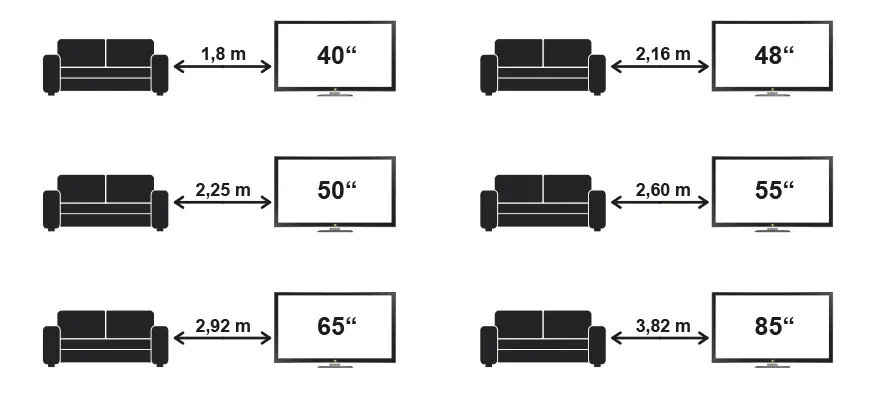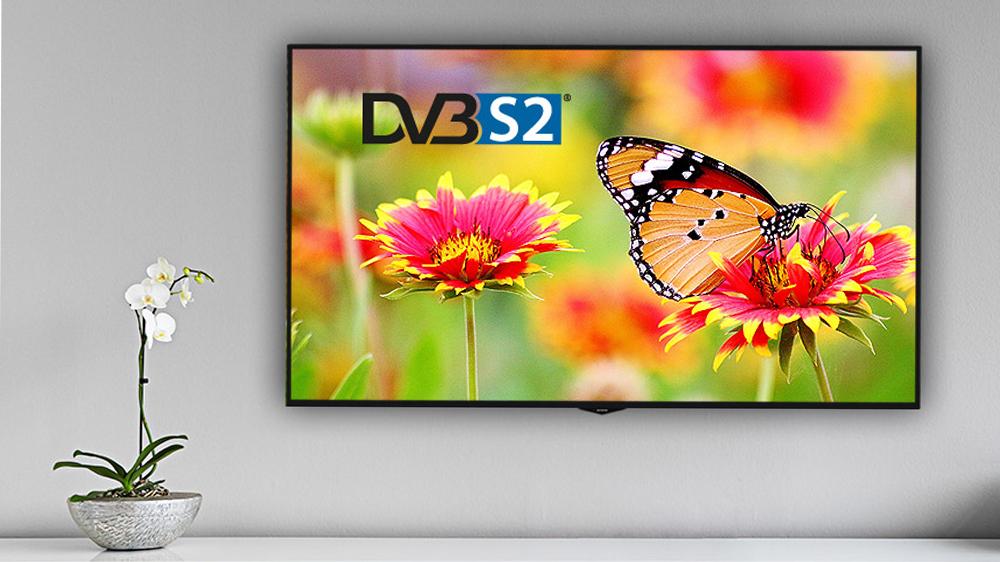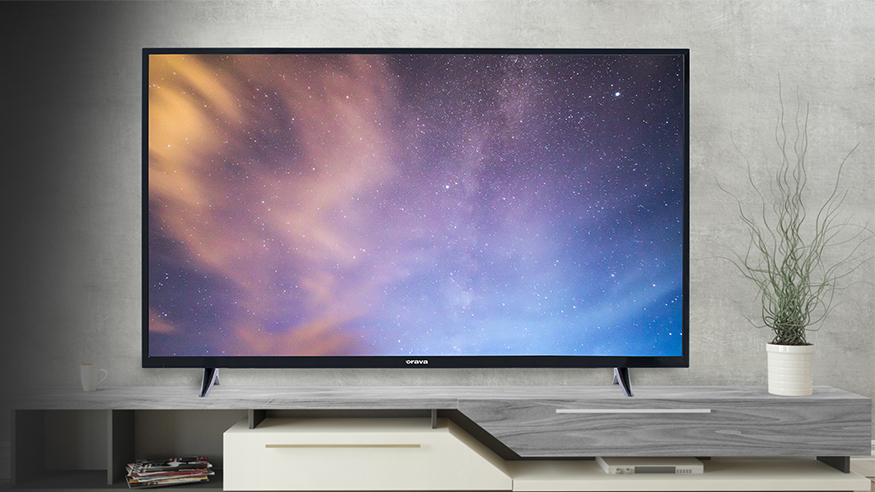How to choose the right TV?
The television has already become an integral part of our lives that we will call it a TV as i fit our best friend. Television is honored in our living rooms, mostly huge and ultra-thin, to entertain us every day, inform us, give us thought, help us relax after a stressful day, and show us unprecedented and unrecognized tastes. TV became an honored “master” in our homes - and with it many of its relatives. We no longer only have a TV set in the living room, but we also settle its smaller siblings in the kitchen, nursery and even in the bedroom. So that we do not miss anything and we can be entertined while we do things at home.
Where to buy TV?
Opportunities to buy a new TV set are often unrelenting throughout the year. Before Christmas, often whole family wishes TV a christmas present, before the World Hockey and Football Championships we would like to watch sports matches on the new TV surface - and with the greatest possible diagonal and resolution. Salespeople are preparing all sorts of promotions and discounts throughout the year - and if our family budget allows it, it is often worth buying a new TV at that time. But sometimes we need to buy it unexpectedly, when our old TV gets broken. The idea of "no TV" in the evening will find ourselves at home without a fun, engaging, tempting companion can cause panic in the family. Whatever your reason for choosing a new TV, you're wondering how to choose the right one for you. Which parameters to note? What features are practical? What should your TV not miss? We'll help you get a good idea of your TV segment.
Location, equipment and budget
Of course, the bigger, more modern, and more “stuffed” with features, the better! However, you must also take into account the budget available to buy the TV. Next, make it clear where you want to build it - whether you're looking for a king's living room TV, or a smaller TV for a kitchen, nursery or cottage. This also depends on the screen size and super technology. You should also be clear about whether you want to use your TV just to watch TV channels or "smart" as a home entertainment center. And everything depends on how you receive the TV signal.
How do you receive a TV signal?
When selecting “TV”, you should also take into account the form and quality of the TV signal you receive, whether through a TV antenna (digital set-top box with DVB-T tuner or TV with built-in tuner), via cable - optical or coaxial (DVB-C tuner required), allowing you to watch TV programs, but also make calls and have Internet access at home. However, you must inquire beforehand whether cables are accessible at your place of residence and whether any of the providers provides such services. You can also receive a TV signal via the fiber optic cable - for this you need a set-top box equipped with an IPTV or software decoder, but you pay monthly fees (Orange, Slovak Telecom, Antik, Klik-TV). The highest signal quality and range of broadcast programs is the reception of TV signal via satellite, you need a digital set-top box with a DVB-S tuner or a TV with a built-in decoder. You will have plenty of TV stations and internet access, but you pay for them monthly.

LED, OLED, HDR and other abbreviations
The way of displaying individual points on the TV screen depends on the so-called. display technology. You may have heard of plasma TVs that display amazing colors, but their consumption is so high that they slowly draw into oblivion ... Years ago they were supposed to belong to the world, but this technology is proving too uneconomical. The classic is represented by LCD TVs, which ultimately win their battle with the plasma, but enhanced by LEDs placed along the edges of the LCD panel or in the background across the screen. They are well-known LED TVs - if the TV receives a good TV signal, the picture is sharp, the contrast is higher, the colors on higher models are nicely rendered. And all with low power consumption. They represent the golden middle way. On OLED televisions, the panel is formed by organic light emitting diodes that emit good light, so no additional backlight is required. They have a wide viewing angle, high contrast and brightness, have fast response times, deliver high-quality images, and are among the best on the market - but that is also their price. And HDR TVs are coming! They are a hit of recent seasons and it seems that they are the the future as experts predicting. As a technology, HDR (High Dynamic Range) is what is called imaging true to reality. The image on HDR TVs is as sharp as a razor, with incredible contrast and rendered with very realistic colors. It has a wider brightness range and two key factors when watching such a TV are the contrast ratio, respectively. the difference between the lightest and darkest points on the screen, and the color sharpness that allows the vividness of colors on the TV screen to be brought to life in real life. These two parameters seem to be even more crucial than the higher resolution (ie the number of pixels on the screen) when displaying a TV picture. The aim of HDR technology is to transmit an image to the screen with the same parameters as captured by professional film cameras - the most natural and true reality possible, without distortion, omission, poor black and light smudges.
Let's look at the numbers!
Screen Size and Resolution - Indicates the number of dots, both vertically and horizontally, to produce an overall picture. Depending on your usage and willingness to invest in the footage, you have a diagonal of 16 to 105 inches (up to 2.60 m!), With an inch equal to 2.54 cm. As the area grows, the need for higher screen resolutions for image sharpness increases. For larger diagonals, the refresh rate should also be noted, because if the diagonal is less than maxi on the cheaper TV models, but the refresh rate is low, the picture may not be of sufficient quality. As a rule of thumb, you should also have large enough living room footage for large screens.
Where you watch TV should be about 3 times the diagonal of the TV, but! - higher screen resolution shortens this distance. So it makes no difference whether you have a 40 '' HD Ready screen (1,366 x 768 px) - at larger diagonals with this resolution, there is a slight blur in the picture, Full HD resolution (1,920 x 1,080 px), 4K (Ultra HD , UHD) resolution (3,640 x 2,160 px) or bombastic 8K resolution (7,680 x 4,320 px). However, with increasing resolution, the TV is more demanding on the quality of the received signal. So if you can only receive the signal in HD Ready quality, you will unnecessarily buy a 4K TV. 4K resolution is more likely to be used for watching movies (eg via Netflix), as regular 4K TV channels do not broadcast. However, most modern TVs are equipped with upscaling, which automatically calculates pixels from higher to higher (to some extent only) to enhance the picture - for example, with SD-quality TV signals on Full HD TVs, or Full HD signals on 4K televisions.
Keep in mind when selecting a TV!
- Also note the contrast value, especially the static - it should be higher.
- Do not forget the sound, which also significantly adds to the TV viewing experience. The mid-range TV has 2 x 10 W speakers, the top-of-the-range speakers have integrated subwoofers and high-quality speakers up to 60 W (RMS).
- Do not overlook the consumption of the TV. Dynamic mode ensures good brightness and contrast, but can be a “energy twist”, so it is advisable if Eco mode is also available. In standby mode, the TV should consume less than 100 W.
- Practical features are the EPG - TV Guide, PIP (Picture In Picture) allows you to watch two different programs simultaneously, PVR Ready (the function of recording TV programs and movies to external storage so you can watch it at a convenient time).
Our favorite: Smart TV - home entertainment center
Modern TVs can be connected to devices such as a computer, camera, camera, DVD / Blue-ray recorder or game console to create a multifunctional family entertainment home. Therefore, it is also necessary to shine on the inputs and outputs and the possibilities of virtual connection (WiFi, Bluetooth, Mirroring - mirroring TV and smartphone, NFC, WiDi). Ideally, if your TV has enough inputs and outputs, you may not always have to disconnect and connect depending on the application. HDMI (ideally if it has 3) and USB ports (especially in version 3.0 for higher transfer speed) are versatile, so it is good to have more of them. When receiving the signal via satellite and cable you will use the CI / CI + slot. Wireless technology allows you to pair your TV without unnecessary cable pulling, with soundbar or smartphone.
Smart TV enters the game, which, in addition to watching TV channels, also allows you to enjoy content via an Internet connection - via pre-installed or optional-installed applications. You can use Skype, YouTube, Facebook, Internet browsers, watch online shows via Netflix, HBO, Stream and so on. Interesting is HbbTV technology, which combines the advantages of conventional TV and the Internet. Allows you to see text, photos, or video on a TV show that is currently being broadcast when it offers hybrid services, even in a separate screen window, parallel to the program being watched. During a football match, you can see the current results or player profiles, during a discussion session you participate in the competition, all simply on the remote control. You also have free access to the digital archive of that TV station.

